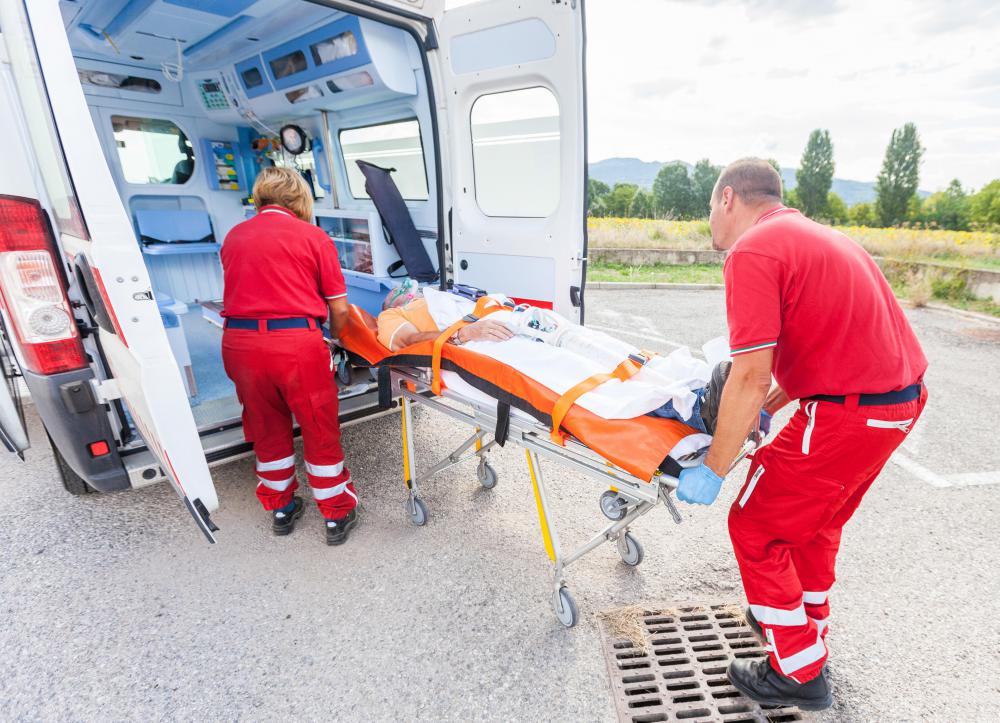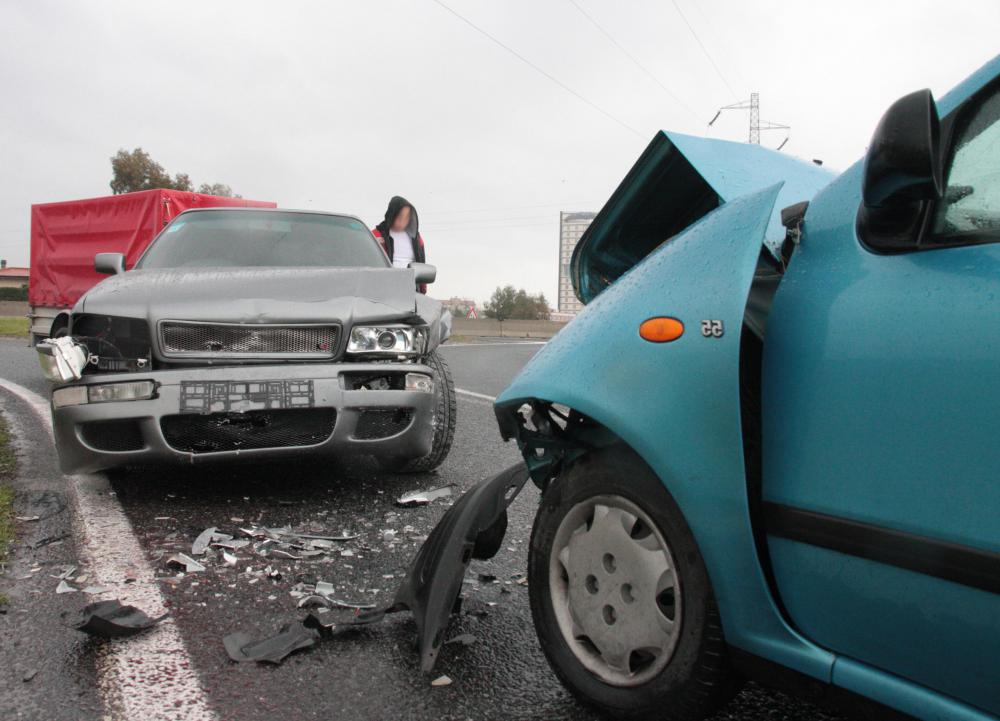At TheHealthBoard, we're committed to delivering accurate, trustworthy information. Our expert-authored content is rigorously fact-checked and sourced from credible authorities. Discover how we uphold the highest standards in providing you with reliable knowledge.
How do I Perform a Trauma Patient Assessment?
Patient assessment is an important, early action in providing aid to someone who has suffered a trauma. To perform a trauma patient assessment, there is a recommended order of steps that must be performed quickly. These steps include taking your safety into consideration, determining the mechanism of injury (MOI), determining the number of injured persons and assessing their conditions. Trauma patient assessment must be performed very rapidly when there is a significant MOI, and it often involves the simultaneous performance of all of these steps in order to be on the way to the hospital within 10 minutes of arriving on the scene.
Trauma patient assessment, according to approved emergency medical technician (EMT) trauma training in the United States, should begin with making sure that the scene in which the patient is found is safe and that personal protective equipment is worn. This equipment will help protect you against contagious diseases. You then must determine whether the MOI is significant — such as a high-speed car crash — because trauma patient assessment can change based on the MOI. A significant MOI often requires manual stabilization of the cervical spine, and this must be maintained until a cervical collar can be applied and the patient can be secured to a spine board.

You will then want to determine how many patients you are dealing with and whether you need to request additional help. Formation of your general impression follows next. Basically, if a person appears to be very ill, is in great discomfort, is unresponsive or has an altered mental status, he or she is considered a high-priority patient. His or her level of consciousness must be determined by checking for one of the four levels of responsiveness: alert and responsive, responsive to verbal stimuli such as shouting, responsive to pain and totally unresponsive.

The chief complaint in the patient's words or the reason why medical help was summoned by someone else must be considered for clues to the extent of injuries. Next, you must assess the patient's airway, breathing and circulation. You must ensure that the person has an airway, is breathing adequately, has a pulse and has no major bleeding. Any problems with these potentially are life-threatening and require intervention within your scope of practice. EMTs who work in the field make a transport decision at this point in the process of trauma patient assessment.

If the MOI is significant, you will perform a rapid physical exam, intervening for some findings and simply notating others in order to inform the medical staff members who will be taking over the patient's care. Other things to look for during an assessment are deformities, contusions, abrasions and perforations or punctures, along with burns, tenderness, lacerations and swelling — known among emergency and medical personnel as DCAP-BTLS. You should examine the head for these factors as well as for crepitus, a grating sound or what feels like broken bones that are rubbing together.

Next, examine the neck area for DCAP-BTLS as well as for crepitus and distention of the jugular vein. Then you should examine the chest and listen with a stethoscope for the presence of breathing sounds while visually checking for paradoxical motion. When movement of a section of ribs is opposite to the direction of movement of the rest of the chest during breathing, paradoxical motion is present.

Your trauma patient assessment should continue with examination of the abdomen for abdominal trauma. Check for DCAP-BTLS and note whether the area is firm, soft or distended. If the patient tells you that a certain area is painful, palpate it last and very gently. This might be the most difficult part of the trauma patient assessment, because patients who are in abdominal pain will attempt to guard the area.

Examine the pelvis area for DCAP-BTLS and press very gently and evenly on both iliac crests or "wings" at the same time to avoid rocking the pelvis, an action that will cause intense pain if there is a fracture. Inspect each extremity for DCAP-BTLS, a distal pulse, motor function and sensation. The patient's posterior body is examined before he or she secured to a spine board, and his or her vital signs should be taken.
You should get certain information from the patient or from the patient's family. This information includes symptoms and signs, allergies, medications, pertinent history, last oral intake and the events leading to the trauma, all of which can be remembered as SAMPLE. Patients without a significant MOI receive a focused inspection of the specific body parts injured based on the chief complaint instead of a rapid, heat-to-toe exam. An EMT will continue to manage wounds, will take vital signs and might perform a detailed physical examination on the way to the hospital in the case of a significant MOI.
AS FEATURED ON:
AS FEATURED ON:
















Discussion Comments
@Grivusangel -- I'm glad you mentioned that. I was thinking the same thing.
I'd be scared to death to actually move a trauma victim, for fear of making bad matters worse. I have heard of bundling blankets on either side of a person to keep them from moving too much before help arrives, and I would say that's a good, non-invasive way of helping. Let the pros handle moving someone.
I think it's important to mention that the average person is not trained to do this. This is EMT/nursing training. An ordinary person who is on the scene of a wreck, for instance, should first call 911 and tell the dispatcher as much as possible about victims' visible injuries or conditions. The person may be able to reassure victims that help is on the way, or that they will be all right, but in most cases, someone who is not trained in CPR or first aid probably just needs to limit assistance to calling for help and reassuring victims, if possible.
Post your comments